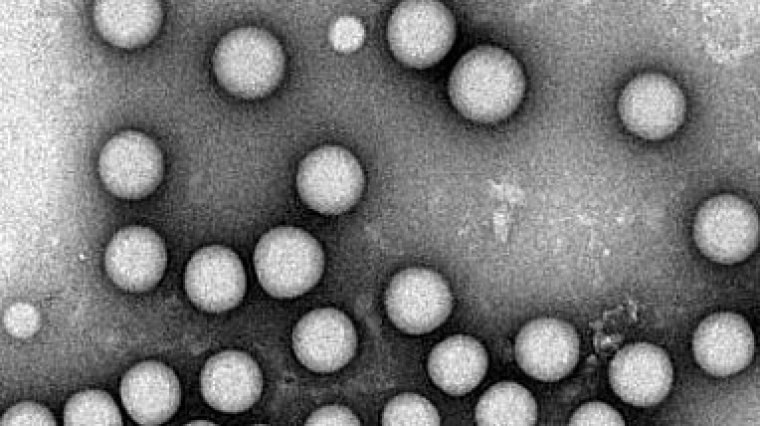| News / Tech News |
Nanoparticles target, transform fat tissue
NIH | JUNE 1, 2016
In recent years, researchers have gained insights into the roles of different types of fat tissue in weight control. Adults have mostly white fat, in which excess calories are stored as chemicals called fatty acids. Too much white fat increases the risk of several metabolic disorders.

The targeted nanoparticles used in the study, visualized by transmission electron microscopy. ![]()
Brown fat, in contrast, burns energy to create heat and help maintain body temperature. Infants have brown fat when they're born, but we lose it as we age. Brown fat was only recently proven to exist in adults. Since brown fat cells are able to burn calories, they could potentially play a role in strategies to reduce obesity and its associated disorders.
Fat tissue and its supporting blood vessel network can change over time. Compounds such as rosiglitazone (Rosi) and prostaglandin E2 analog (PGE2) have been shown to have “browning” effects on white fat tissue—increasing metabolism and the growth of new blood vessels. However, such drugs may have unwanted effects on other tissues.
Nanometer-sized particles, or nanoparticles, can be designed to target specific organs or tissues. The technology is current being explored in cancer and other therapies. A team designed nanoparticles to target browning agents to fat tissue.
The researchers developed nanoparticles with a core containing Rosi or PGE2 along with a polymer called PLGA that enables slow release of the drug. To target the nanoparticles to fat tissue, the outer surface was made of a polymer called PEG attached to either iRGD or P3—compounds that bind to molecules inside the blood vessels of fat tissue. The particles were delivered to the mice by intravenous injection.
Compared to control mice given the drugs free in solution or in nontargeted nanoparticles, the mice treated with the targeted nanoparticles had darker white fat. Under the microscope, their fat cells appeared smaller and there were more blood vessels. Expression of UCP1, a marker of brown fat cells, was significantly raised by the targeted nanoparticles as well.
The researchers next tested the Rosi nanoparticles in obese mice fed a high-fat diet. The targeted nanoparticles inhibited body weight gain by about 10% compared to untreated mice, or to mice treated with Rosi in solution or in nontargeted nanoparticles.
Mice treated with targeted nanoparticles had smaller fat cells, more blood vessels, and higher levels of brown fat markers. Notably, the groups had similar food intakes. These findings show that the targeted Rosi nanoparticles reduced weight gain by browning fat tissue.
This study focused on Rosi as a proof of concept. In the clinic, Rosi has serious side effects, but agents other than Rosi or PGE2 could be loaded into the nanoparticles.
YOU MAY ALSO LIKE




